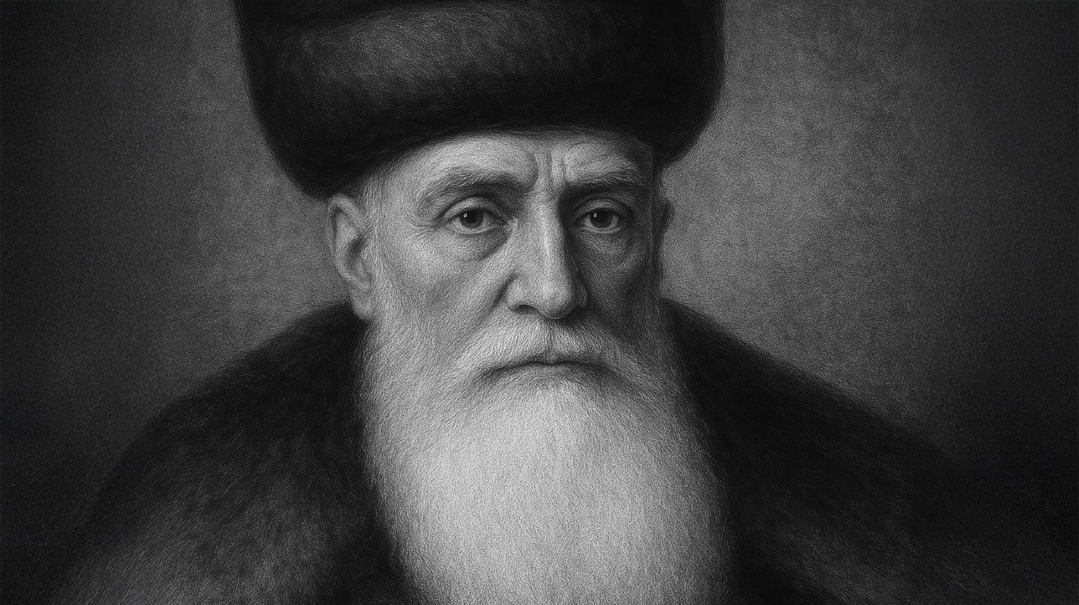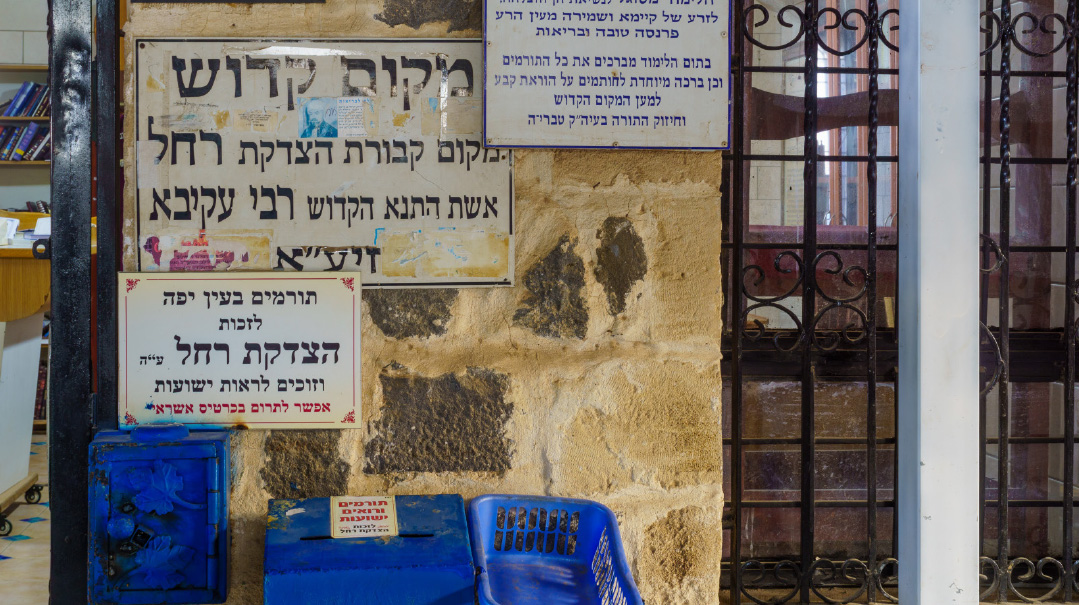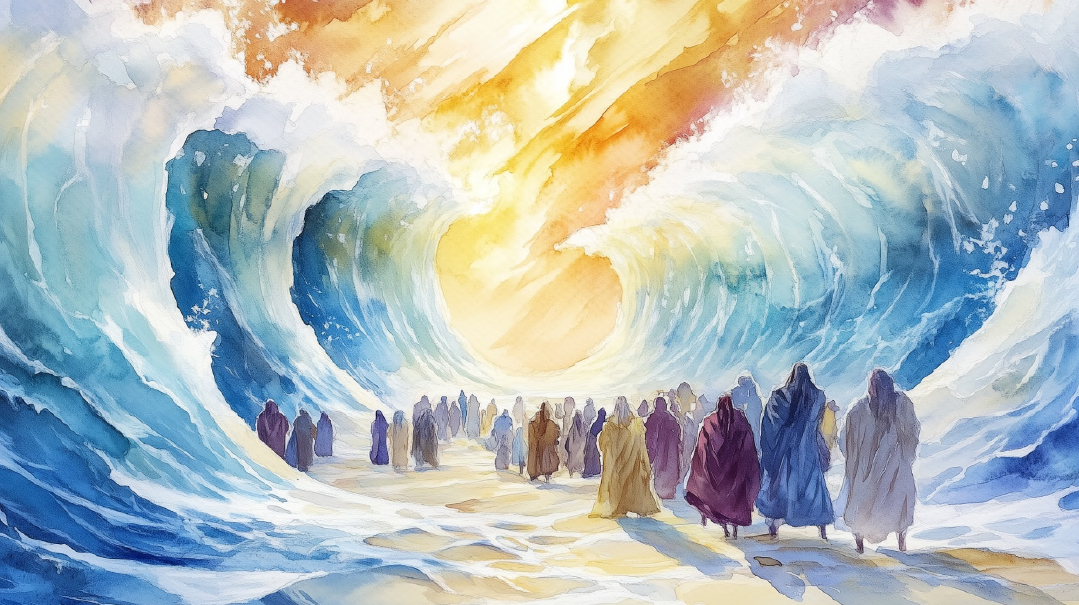Just Plain Chutzpah
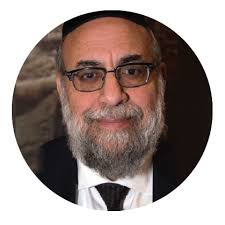
“Only what HaKadosh Baruch Hu says about me is important, anything else is absolutely insignificant”
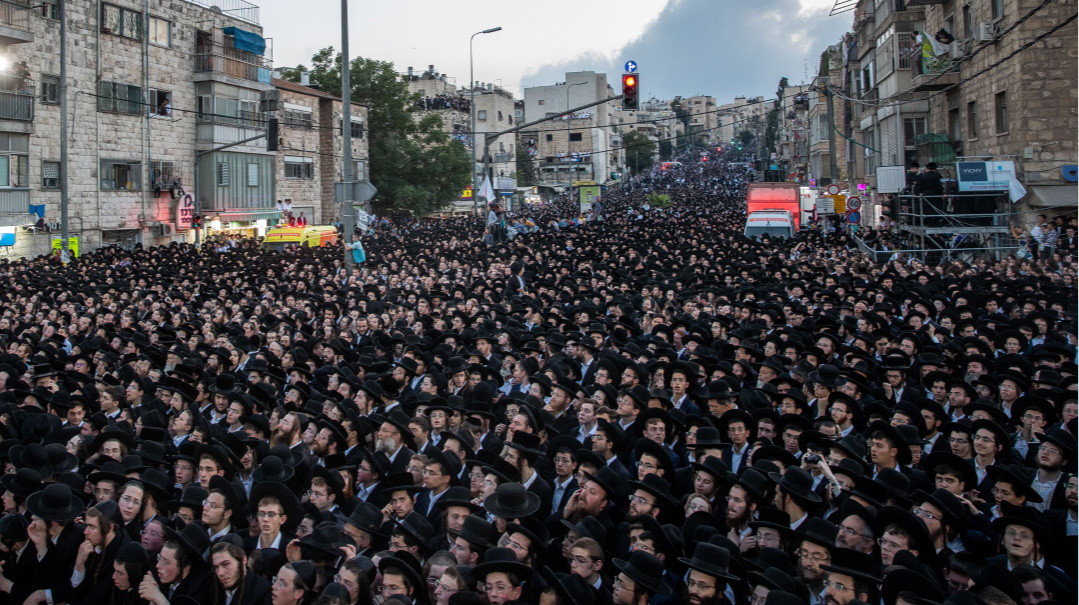
O
ne Leil Shabbos more than a decade ago, my wife and I were walking back from the Kosel to our hotel. A rabbinic colleague whom I hadn’t been in touch with crossed paths with us. He was thrilled to see me and said he had an important favor to ask of me.
He and his wife were having great difficulty with their teenage daughter. They were at a loss as how to guide her back on track. After seeking advice from many authorities, both professional and rabbinic, they were having no luck. Someone suggested he present his problem to the gadol hador, Rav Aharon Leib Steinman, in Bnei Brak.
This was the reason he had come to Eretz Yisrael, but he was struggling to find someone who could help him arrange an appointment with Rav Steinman. He had walked all the way from Ramat Eshkol to the Kosel on Leil Shabbos, davening that Hashem would send him help. He was overjoyed when he saw us, as he knew that I was a frequent visitor to the Rosh Yeshivah’s home. I told him I considered it a zechus to see Rav Steinman, and to do this chesed for another Yid would be a win-win situation.
I made sure to apprise the Rosh Yeshivah of the purpose of this person’s visit and the nature of his question. As we entered the humble apartment on Rechov Chazon Ish, the Rosh Yeshivah greeted us with his warm smile. I introduced my guest, and the Rosh Yeshivah gave him much-needed chizuk and some suggestions on how to move forward with his daughter. After a few minutes , the Rosh Yeshivah gave him a warm brachah, and I tapped my guest on the shoulder, indicating it was time for us to leave.
But before we turned to go, my guest did something absolutely horrifying. I was totally blindsided and was never so embarrassed in front of the aged gadol hador. My guest took it upon himself to mention an ongoing conflict in the yeshivah world between two schools of thought, one side following the Rosh Yeshivah’s opinion and the other adhering to the opinion of another adam gadol. My guest went so far as to softly criticize the Rosh Yeshivah’s position by contrasting it with the positions of gedolim in the previous generation.
I was absolutely mortified. I had made very clear to the gabbaim that I brought this person to ask a very personal question. Never was there even a hint that he would use the opportunity to push a political agenda in the Rosh Yeshivah’s own home.
After we exited Rav Steinman’s home, I suggested to this fellow that he think long and hard about what manner of teshuvah would be required for disrespecting the gadol hador thusly in his own home. I also told him he should find alternate transportation back to Yerushalayim.
I immediately went back inside and approached the Rosh Yeshivah with great remorse about what had happened, and I said to the Rosh Yeshivah that I would understand if he asked me not to return again to his home.
The Rosh Yeshivah broke out into a wide smile that lit up the room. He pointed to his white beard and said, in Yiddish, “It’s been many, many years since I stopped caring about what people say about me. Only what HaKadosh Baruch Hu says about me is important, anything else is absolutely insignificant.”
Rav Steinman always taught me important lessons; this one was a life-changer.
I remember as a teenager reading in the papers that the popular Cardinal John O’Connor of New York, who had strong relationships with many Jewish community leaders, had a made an unfortunate statement regarding the Shoah. I took issue with it and wrote a public letter to him that appeared in a national Jewish newspaper. He read it, and responded to me in a public letter. We had a public correspondence for a while, then it ended.
It created a stir in the community and someone brought it to the attention of my rebbi, Rav Henoch Leibowitz ztz”l, the rosh yeshivah of Yeshivas Chofetz Chaim. I waited for him to say something to me, but he never did. Finally, weeks later, I asked for his thoughts on my correspondence with the cardinal.
His first response was, “I didn’t know you could write so well.” Then a bit later, he said to me, “Not everything you hear needs to have a response. Sometimes silence is the strongest response.”
The Brisker Rav ztz”l once said something similar, albeit more strongly phrased. A minister of religious affairs publicly criticized the Brisker Rav. Rav Aharon Kotler ztz”l was in Eretz Yisrael at the time and called for a hafganah (public demonstration) to protest the lack of kavod for the great Brisker Rav. He then gave a fiery drashah about kavod haTorah that became one of his classics.
Later, when the Brisker Rav heard about the demonstration, he commented, “Whenever a dog barks, we have to make a hafganah?”
Unfortunately, neither the Brisker Rav ztz”l, nor Rav Aharon Leib Steinman ztz”l, nor my rebbi Rav Henoch Leibowitz ztz”l are here for me to consult as to whether some kind of response is warranted in the current situation.
I am referring to the issue of drafting of yeshivah students into the Israel Defense Forces. However, my focus here is not on this nearly century-old source of division and discord in our small country that is being battered from every corner of the earth; nor will I explore the politics or halachic background of the issue.
I am limiting my discussion to the painful phenomenon of people who have always identified themselves with the Torah tzibbur — in varying capacities — who have decided to force their way into this debate and voice their “daas Torah.” Whether they do so on their blogs, public Internet forums, or just on WhatsApp statuses, they have stepped into what is clearly the most important issue affecting Klal Yisrael today. On an existential question that has always fallen under the exclusive purview of the gadol hador to render a decision, today every balabos, every “talmid chacham” knows exactly what should be done.
The Mishnah at the end of Masechta Sotah describes the state of the world at the time of Ikvesa D’Meshicha. One of the characteristics mentioned is chutzpah yasgi, which the Tiferes Yisrael explains as “widespread chutzpah.” Could the Mishnah be referring to our very situation? That people educated in and involved in the Torah community have stepped outside accepted parameters and no longer feel the need to leave Klal Yisrael’s most difficult question to the gadol hador, and instead feel entitled and equipped to render opinions in the matter?
Perhaps a brief review of Chazal’s description of the role of the gadol hador of each generation is in order.
The Ran in his derashos says that in every generation, Hashem puts His Shechinah on the gedolei hador. Just as the Shechinah was placed in the Beis Hamikdash and spread throughout Klal Yisrael, so too in every generation the Shechinah rests on the gadol hador and spreads from there to Klal Yisrael. Chazal in Masechta Bava Basra (12a) teach us that although nevuah was taken from the prophets when the Beis Hamikdash was destroyed, it was not taken from the scholars.
The Ponevezher Rav always taught his students that he lived with the words of this Chazal throughout his life. “In Europe, I accepted the words of my rebbi, the Chofetz Chaim ztz”l, as if they were the words of a navi. After coming to Eretz Yisrael, I accepted the words of the Chazon Ish ztz”l as a navi.”
He explained that he was capable of disagreeing with the Chazon Ish when it came to understanding Torah the same way he was able to disagree with Rav Akiva Eiger. But when it came to worldly matters, he said each and every word that issued from the Chazon Ish’s lips was pure brilliance and to him was “Torah miSinai.”
The late editor in chief of this magazine, Rabbi Moshe Grylak ztz”l, once said he could understand who the Chazon Ish was based on the awe he elicited from his own rebbi, Rav Shlomo Zalman Auerbach ztz”l. Rabbi Grylak related that when he was in Yeshivah Kol Torah, Rav Shlomo Zalman, in his daily shiur, would often discuss some of the halachic sh’eilos he was dealing with. Once Rav Shlomo Zalman told them that he was engaged in a lengthy debate with the Chazon Ish on the difficult topic of terumos and maasros. He shared his position and read the correspondence he had with the Chazon Ish.
After many weeks of going back and forth, Rav Shlomo Zalman told his talmidim that he had agreed to the Chazon Ish’s position on the matter. Rav Grylak related that the students were a bit surprised, because their rebbi was very insistent that his position was correct and that his proof against the Chazon Ish’s opinion was ironclad. They wondered what caused him to change his mind.
Rav Shlomo Zalman explained to them that in the last correspondence from the Chazon Ish, he didn’t respond to his arguments, and instead he just wrote, “This is my opinion.”
Rabbi Grylak related that Rav Shlomo Zalman said, “When the Chazon Ish brings proofs for his position, I can refute them with my own understanding. But when he simply says, ‘This is my opinion,’ that’s all of the Chazon Ish’s Torah speaking, which we have no grasp of. Then I have no alternative but to accept his position as Torah miSinai.”
There is a famous story of one of the head rabbanim of the Mizrachi movement coming to ask the Chazon Ish why he was so opposed to the government compromise of allowing religious girls to enter sheirut leumit in lieu of army service. This rabbi challenged the Chazon Ish on his source for forbidding it.
The Chazon Ish ripped open his shirt, revealing his chest, and pointing to his heart, he said, “It’s written here.”
The truth of the Torah was “chakuk al libo,” engraved upon his heart. (Rav Shlomo Lorincz wrote that he later asked the Chazon Ish if there really was no source for this prohibition. The Chazon Ish took out a Gemara and showed him the proof. “At the time, I couldn’t remember the source,” he explained. “I just knew it was the truth.”)
There are those who feel that the gedolim of yesteryear, like the Chazon Ish and Rav Moshe Feinstein, are infallible, but today, niskatnu hadoros — the gedolim of this generation are smaller and don’t have the same siyata d’Shmaya for resolving the difficult issues of the day. There is no greater kefirah than that.
Someone once asked the legendary leader of Agudas Yisrael, Rabbi Moshe Sherer ztz”l, how he was able to work with a Moetzes that had gedolim many years his junior, especially after he had worked so closely for many years with Rav Aharon Kotler and Rav Moshe Feinstein.
He shared the insight of the Gerrer Rebbi, the Imrei Emes, on the Chazal that because Moshe Rabbeinu was ten amos tall (Bechoros 44a), therefore Aharon HaKohein also had to be ten amos tall, because they were shekulim, equal in every way (Bereishis Rabbah 1:21). But that raises the question: How could Elazar have worn the same Bigdei Kehunah that his father Aharon wore (Bamidbar 20:26)? The Imrei Emes answered that somehow, the Bigdei Kehunah that fit Aharon also fit Eliezer. So it was with the Moetzes, explained Rabbi Sherer; the younger generation somehow filled the shoes of their prominent predecessors.
Once I had the zechus to sit at the Leil Shabbos seudah together with Rav Shach ztz”l at his home. I took advantage of the relaxed atmosphere to ask the Rosh Yeshivah several important hashkafah questions. One of my questions: We know that the Chazon Ish set the tone in Eretz Yisrael for many years of full-time kollel learning without any involvement in the army or higher secular learning due to the need to rebuild what was lost in the Shoah. He held that “for the next yoivel shanim, it should be Torah and only Torah.” I asked the Ponevezher Rosh Yeshivah: Since more than 50 years had passed since the Chazon Ish’s directive, why couldn’t we just change the system back to the way it was in Europe before the war?
Rav Shach took the question very seriously. He responded that only a beis din greater in numbers and wisdom than the Chazon Ish could change the system, and since we didn’t then have anyone who could do that, we had no choice but to maintain the derech the Chazon Ish put into place. Years later, I shared that conversation with Rav Aharon Leib Steinman. He responded that he thought Rav Shach was probably the last one who could have made the needed changes, but since he didn’t, it could no longer be done. Thus, the Chazon Ish’s directive remains in place.
Now if Rav Shach, the gadol hador on whose every word the entire Torah world hinged, didn’t feel qualified to make those changes, how can someone with a laptop or an iPhone do away with the Chazon Ish’s directive with the push of a button? Of course, their argument is that this issue is so divisive in Israeli society today that it must be changed to allow us all to come together as one.
Well, maybe there is some truth to that, or to some similar argument. But who is the one qualified to make that change? Only the gadol hador — who may understand that the previous ruling might never have applied to the present circumstances — and who is granted the special siyata d’Shmaya to decide those matters that will affect the status of Torah in Eretz Yisrael for years to come.
There is another important consideration here for the “chutzpaniks.” Many years ago, the gadol hador in America, Rav Moshe Feinstein, received a letter from the vaad in charge of Chinuch Atzmai seeking his opinion on an important matter. Two of the greatest gedolim in Eretz Yisrael, Rav Yechezkel Abramsky and Rav Zalman Sorotzkin, differed on a decision crucial to Chinuch Atzmai’s future financial stability. Unable to agree, these two gedolim asked the vaad to reach out to Rav Moshe for his opinion in the matter, and they all agreed to abide by his psak.
Rav Moshe responded that it was not proper for him to rule on a matter pertaining to Eretz Yisrael, since the great gedolim who lived there had firsthand understanding of the issue. Even though Rav Moshe had given so much of his time and kochos to assisting Chinuch Atzmai, he still felt it was not his place to offer an opinion in this matter, and he deferred to the expertise of the gedolim of Eretz Yisrael.
And yet today we have people issuing opinions on matters in Eretz Yisrael who were never asked, who are not the gedolei hador, and who send out their daas Torah from wherever they sit with their laptops. It’s chutzpah on steroids.
When I shared some of these thoughts with one of the leading roshei yeshivah in Eretz Yisrael today, he added that these people need to understand that when they publicize their thoughts to the tzibbur, speaking on behalf of the Torah world, they are violating the issur of being mevazeh talmidei chachamim — as if to say, we know better than they do.
In this vein, the Chofetz Chaim (Issur Lashon Hara, klal 8, halachah 4) points out that the yetzer hara attempts to fool a person into thinking that the laws against belittling a talmid chacham were only applicable in the times of Chazal, but not in our day. That is a complete falsehood; in every generation, every recognized talmid chacham is qualified to be called such, and all the laws and punishments for being mevazeh a talmid chacham are applicable to him. The Chofetz Chaim concludes that these laws apply also in the case where the bizyonos were made shelo b’fanav, not in his presence. I wonder if the Chofetz Chaim could also have been referring to degrading and disrespectful comments posted on a blog…
I want to address one final issue that I find perplexing. Any person with even the slightest sense of yiras Shamayim in his Yiddishe neshamah can’t help but see the open miracles that we have experienced every single day since October 7. I find it hard to believe that even the most ardent secularists among us still have complete faith in the IDF and its abilities, especially after what happened on October 7. The many stories coming out of Gaza from individual soldiers show that any IDF accomplishments there are due to a Higher Source.
However, to focus on the open nissim every day, we have to be maaminim bnei maaminim. I read a recent army six-month progress report on the war that stated over 13,000 missiles had come in from either the south or the north. While every single Jewish life is precious and irreplaceable, and there was also significant material damage, there were very few lives lost due to these missiles.
Only 37 percent of these missiles were brought down by the Iron Dome system. Where did the other 63 percent of the missiles end up? Hashem is working open miracles for His children each and every moment of the day, in the midst of the Chevlei Mashiach that we are living though. And these are just the miracles that we witness. What about the countless other calamities that Hashem has prevented without our knowledge? We have to consider these things as well.
If the people posting online who identify as bnei Torah refuse to acknowledge these miracles, which Chazal tell us are the direct result of limud Torah in Klal Yisrael, then how can we expect them to grasp the importance of maintaining limud Torah in Eretz Yisrael? If these alleged talmidei chachamim among us don’t recognize it, how can we expect the Lapids of the world to do so?
The damage that their words and ideas bring to our small, besieged olam haTorah is impossible to comprehend. Of course, every Yid should be shedding copious tears and feeling the overwhelming pain of every person who lost loved ones either on October 7 or in the line of duty. Every life is a world unto itself and an irreplaceable loss to all of Klal Yisrael. But to react to this colossal communal pain by minimizing the importance of a strong olam haTorah is misplaced, and just plain chutzpah.
We are about to sit down to the Pesach Seder. Many of our families will be missing one or more loved ones from their Seder, and we need to think of them and feel their loss. Maybe as a way to remember them, we can focus on the many miracles that Hashem continues to do for us each and every day. We can then turn to Hashem in heartfelt tefillah to ask that He continue these miracles and bring healing to all the broken-hearted people in Klal Yisrael.
We say each year in the Haggadah, “kol hamarbeh l’saper b’Yetzias Mitzrayim, harei zeh meshubach” — anyone who goes to great lengths to elaborate on the exodus from Mitzrayim is praiseworthy. The Shelah Hakadosh offers an intriguing interpretation of this: One who elaborates on the miracles HaKadosh Baruch Hu has done for Klal Yisrael, to the point of “harei zeh” — the illumination of the miracles makes them so manifest that one declares “zeh Keili v’anveihu,” this is my G-d and I will glorify Him, and HaKadosh Baruch Hu’s involvement in every aspect of our lives is revealed — that will truly be meshubach. May it happen speedily in our day.
Chag kasher v’sameiach to all of Klal Yisrael!
This article was written l’zecher nishmas Sara Chaya z”l bas Rav Aryeh Zev. Rabbi Chaim Aryeh Z. Ginzberg is the rav of the Chofetz Chaim Torah Center of Cedarhurst and the founding rav of Ohr Moshe Institute in Hillcrest, Queens. He is a published author of several sifrei halachah, sought-after lecturer and writer on Torah hashkafah, and author of the best-selling chizuk resource Rays of Hope (ArtScroll).
(Originally featured in Mishpacha, Issue 1008)
Oops! We could not locate your form.



